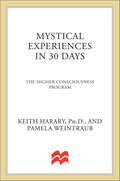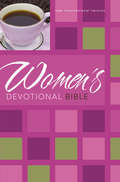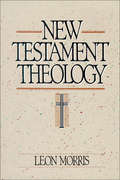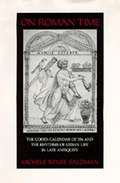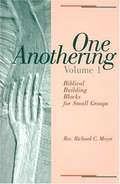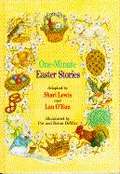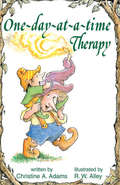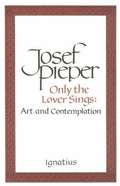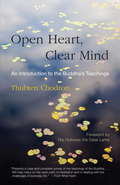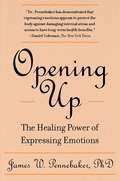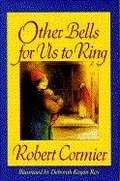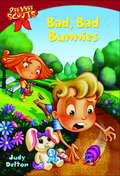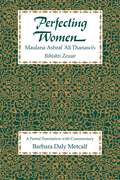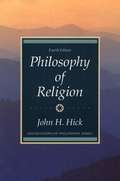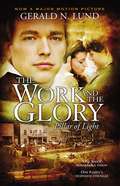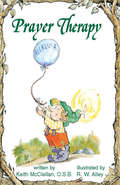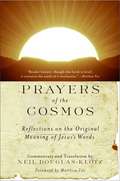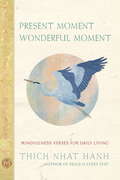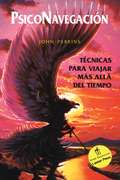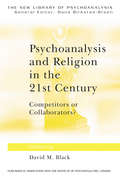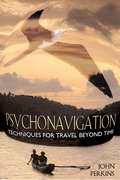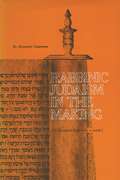- Table View
- List View
Mystical Experiences in 30 Days: The Higher Consciousness Program (In 30 Days)
by Pamela Weintraub Keith HararyThe exercises in Mystical Experiences in 30 Days by Keith Harary, PhD, and Pamela Weintraub teach readers to pay attention to subtle feelings, ideas, and capabilities just beneath everyday awareness. By shifting consciousness from mundane concerns, readers can learn to experience life from the vantage point of the sage.
NIV Women's Devotional Bible
by Livingstone CorporationThe standard in women’s devotional Bibles, the NIV Women’s Devotional Bible helps you apply God’s Word to your everyday life. This Bible includes a full year of devotions written by women of God, who had a woman like you in mind. This group of women writers offers inspiration, candid perspectives, and guidance from the Bible. During the week, there are guided reflections to help you apply Scripture to your daily life. On the weekends, you will have the chance to get to know the women of the Bible on a more personal level. After a year is up, there are reading plans that will lead you into the next year! Features: • Complete text of the NIV—the most popular modern-English Bible• A full year of weekday and weekend devotions with questions for reflection, additional Scripture readings, and more• Devotions written by women of God, including Elisabeth Elliot, Lenya Heitzig, Carol Kent, Ann Graham Lotz, Kathi Macias, and Thelma Wells• Introductions for each book of the Bible • Multiple reading plans for year-after-year use • Author index with biographical information on each contributor • Subject index to help you locate topics easily
Nazism, The Jews and American Zionism, 1933-1948
by Aaron BermanAaron Berman takes a moderate and measured approach to one of the most emotional issues in American Jewish historiography, namely, the response of American Jews to Nazism and the extermination of European Jewry. <P><P> In remarkably large numbers, American Jews joined the Zionist crusade to create a Jewish state that would finally end the problem of Jewish homelessness, which they believed was the basic cause not only of the Holocaust but of all anti-Semitism. Though American Zionists could justly claim credit for the successful establishment of Israel in 1948, this triumph was not without cost. Their insistence on including a demand for Jewish statehood in any proposal to aid European Jewry politicized the rescue issue and made it impossible to appeal for American aid on purely humanitarian grounds. <P><P> The American Zionist response to Nazism also shaped the political turmoil in the Middle East which followed Israel's creation. Concerned primarily with providing a home for Jewish refugees and fearing British betrayal, Zionists could not understand Arab protests in defense of their own national interests. Instead they responded to the Arab revolt with armed force and sought to insure their own claim to Palestine. Zionists came to link the Arabs with the Nazi and British forces that were opposed to the establishment of a Jewish state. In the thinking of American Zionists, the Arabs were steadily transformed from a people with whom an accommodation would have to be made into a mortal enemy to be defeated. <P><P> Aaron Berman does not apologize for American Jews, but rather tries to understand the constraints within which they operated and what opportunities-if any-they had to respond to Hitler. In surveying the latest scholarship and responding to charges against American Jewry, Berman's arguments are reasoned and reasonable.
New Testament Theology
by Leon MorrisThis work is not a history of New Testament times, nor an account of New Testament religion. Nor does it proceed from a view that the New Testament was written as theology. We must bear in mind that the writers of the New Testament books were not writing set theological pieces. They were concerned with the needs of the churches for which they wrote. Those churches already had the Old Testament, but these new writings became in time the most significant part of the Scriptures of the believing community. As such, they should be studied in their own right, and these questions should be asked: What do these writings mean? What is the theology they express or imply? What is of permanent validity in them? We read these writings across a barrier of many centuries and from a standpoint of a very different culture. We make every effort to allow for this, but we never succeed perfectly. In this book I am trying hard to find out what the New Testament authors meant, and this not as an academic exercise, but as the necessary prelude to our understanding of what their writings mean for us today. -- From the Introduction
North of Hope
by Jon HasslerHailed by The New York Times Book Review as a “writer good enough to restore your faith in fiction,” Jon Hassler has established himself as a contemporary literary master. With North of Hope, he surpasses his own previous work, both in scope and intensity. Set in the scrubby, jackpine-speckled landscape of northern Minnesota—a place that will have a profound effect on the characters’ lives—this beautifully written, deeply moving novel is the crowning achievement of an already distinguished career. After more than twenty years in the priesthood, Father Frank Healy is going home. Emulating the hero of his youth, a nineteenth-century missionary named Father Zell, Frank is bringing Catholicism to the Ojibway Indians living on the Basswood reservation in the north woods. But what Father Healy finds when he arrives at the battered Church of Our Lady are very few believers and a woman from his past—the woman from his past—whom he thought he’d never see again. Frank thought Libby Girard more beautiful than Jennifer Jones when he first laid eyes on her in the Royal movie theater in 1949. In the intervening years, Libby has been chasing after the happy family life she never had in her violent childhood home, and her search for love has born bitter fruit: a crumbling marriage to a doctor named Tom Pearsall and her daughter Vema, a wild young woman with a long history of crippling mental illness. It is clear to Frank that Libby’s life is unraveling. And as she slowly becomes dependent on him, the lives around them erupt in a tangle of drugs and despair, alcoholism and death. In North of Hope, Jon Hassler has written with great sensitivity about the divinity of the human spirit, and how faith can ennoble the most hopeless life. The Cleveland Plain Dealer has proclaimed Hassler “one of America’s most completely satisfying novelists,” and North of Hope is his most completely satisfying, and thoroughly realized novel.
On Roman Time: The Codex-Calendar of 354 and the Rhythms of Urban Life in Late Antiquity
by Michele R. SalzmanMichele Renee Salzman establishes that the traditions of Roman art and literature were still very much alive in the mid-fourth century. Salzman also studies the Calendar of 354 as a reflection of the world that produced and used it.
One Anothering: Biblical Building Blocks for Small Groups
by Richard C. MeyerEleven sessions, based on such themes as "love oneanother," "bear one another's burdens,""submit to one another," and "encourage oneanother. " Includes guidelines and basicconsiderations for group formation.
One-day-at-a-time Therapy
by R. W. Alley Christine A AdamsHelping you focus on today, instead of feeling stuck in the past or projecting what might or might not happen in the future, this little book will awaken your confidence as a gifted child of God--happy, loved, and in control of your own life.
Only The Lover Sings: Art and Contemplation
by Josef Pieper Lothar KrauthThe popular and highly regarded Josef Pieper speaks of the necessity for human persons to be able to contemplate and appreciate beauty to develop their full humanity. Pieper expresses succinctly that the foundation of the human person in society is leisure, free time in which one can contemplate, be receptive to being and its beauty.
Open Heart, Clear Mind
by Thubten Chodron. . . conveys a clear understanding of Buddhism as it has been practiced by Tibetans, in easily comprehensible language. --His Holiness the Dalai Lama
Opening Up
by James W. PennebakerAnyone who has ever entrusted a troubling secret to a journal, or mourned a broken heart with a friend, knows the feeling of relief that expressing painful emotions can bring. This book presents astonishing evidence that personal self-disclosure is not only good for our emotional health, but boosts our physical health as well. Psychologist James W. Pennebaker has conducted controlled clinical research that sheds new light on the powerful mind body connection. This book interweaves his findings with insightful case studies on secret-keeping, confession, and the hidden price of silence. Filled with information and encouragement, Opening Up explains Why suppressing inner problems takes a devastating toll on health How long-buried trauma affects the immune system How writing about your problems can improve your health Why it's never too late to heal old emotional wounds When self-disclosure may be risky--and how to know whom to trust
Other Bells for Us to Ring
by Robert Cormier[From the front flap:] "At eleven, Darcy has never had a best friend, but this summer she's met the unsinkable Kathleen Mary O'Hara, who, like Darcy, is an outsider in Frenchtown. Darcy has never lived for long in any one place, but it's wartime and her father is in the army somewhere in Europe. Because her own family is Unitarian, Darcy is spellbound by Kathleen Mary's vivid tales about Catholicism. But after that careless baptism, she's stunned. A bit of holy water can't make you a Catholic, or can it? Was Kathleen Mary joking? Must she now go to church every Sunday? Can she eat meat on Friday? Then Kathleen Marry and her family disappear from Frenchtown, and Darcy waits in vain for word from her friend who promised she'd never leave her. Soon after, Darcy learns that her father is missing in action. Desperate and forlorn, Darcy seeks out an old nun known for her spiritual wisdom. Religion is about love, the nun tells her, and about miracles. It's Christmas now, but Darcy remains unsure about the power of God's love until she gets a message from Kathleen Mary--in the form of a miracle. Robert Cormier's first book for children is a touching and profound portrayal of Darcy's curiosity--and doubt--about faith that will appeal to all those who struggle to make sense of a bewildering world." Readers will sympathize with the feelings of eleven-year-olds and learn about life and situations of families whose loved ones served in the armed forces during World War II. Practices of Catholicism and Unitarianism are seen simply through the eyes of children and the point made that there are many ways to God which, no matter what the religion, involve faith and love.
Out with the In Crowd (Jennifer #10)
by Jane Sorenson[from the back cover] "I've never felt so alone in all my life. "Lord," I prayed, "please help me find a way out of this mess!" How did Jennifer end up at an unchaperoned beer party with a bunch of girls she really doesn't know, and boys who've already been drinking? And now, how is she going to get out of this situation?
Pee Wee Scouts: Bad, Bad Bunnies
by Judy DeltonIt's almost Easter and the Pee Wee Scouts are dyeing their eggs. Blue. Green. Pink. Purple. The big Easter egg hunt is coming up. Mrs. Peters, the troop leader, will give out a prize to the Pee Wee who finds the most eggs. A stuffed bunny.Mrs. Peters will give badgets too. For fire safety. The Pee Wees learn all about it.Molly Duff wants to earn that badge.Rachel Meyer wants to win that prize.But something sticky gets Sonny Betz mad, so watch out. Because when Pee Wees are bad bunnies, Easter eggs go flying!
Perfecting Women: Maulana Ashraf 'Ali Thanawi's <i>Bihishti Zewar</i>
by Barbara Daly MetcalfChallenging conventional notions about the place of women in Muslim societies, the Bihishti Zewar (Heavenly Ornaments) gives life to the themes of religious and social reform that have too often been treated in the abstract. This instructional guidebook, used by the world's largest population of Muslims, is a vital source for those interested in modern Indian social and intellectual history, in Islamic reform, and in conceptions of gender and women's roles.The Bihishti Zewar was written in northern India in the early 1900s by a revered Muslim scholar and spiritual guide, Maulana Ashraf 'Ali Thanawi (1864-1943), to instruct Muslim girls and women in religious teachings, proper behavior, and prudent conduct of their everyday lives. In so doing, it sets out the core of a reformist version of Islam that has become increasingly prominent across Muslim societies during the past hundred years. Throughout the work, nothing is more striking than the extent to which the book takes women and men as essentially the same, in contrast to European works directed toward women at this time.Its rich descriptions of the everyday life of the relatively privileged classes in turn-of-the-century north India provide information on issues of personality formation as well as on family life, social relations, household management, and encounters with new institutions and inventions. Barbara Metcalf has carefully selected those sections of the Bihishti Zewar that best illustrate the themes of reformist thought about God, the person, society, and gender. She provides a substantial introduction to the text and to each section, as well as detailed annotations.
Philosophy of Religion (4th Edition)
by John H. HickRevision features an updated discussion on the main topics in the philosophy of religion: the concept of God - grounds for belief in God - ground for disbelief in God - the problem of evil - revelation and faith - problems of religious language - the conflicting falsifiability of religious assertions - the conflicting truth-claims of different religions - human destiny and more.
Pillar of Light (The Work and the Glory # #1)
by Gerald N. LundWith more than two million copies of the nine-volume series in print since its initial release in 1990, The Work and the Glory is one of the most popular historical fiction series ever published by a religious publisher. Pillar of Light, volume one, is soon to be a major motion picture and will introduce this unforgettable story to a new generation of readers. In this saga of the Benjamin Steed family, award-winning author Gerald N. Lund blends historical reality and high-powered fiction to create an enduring love story full of intrigue, suspense, betrayal, and undeniable faith.
Prayer Therapy
by R. W. Alley Keith McclellanThis book will fill readers with the confidence they need to add prayer to life.
Prayers of the Cosmos
by Neil Douglas-KlotzReinterpreting the Lord's Prayer and the Beatitudes from the vantage of Middle Eastern mysticism, Douglas-Klotz offers a radical new translation of the words of Jesus Christ that reveals a mystical, feminist, cosmic Christ.
Present Moment Wonderful Moment
by Thich Nhat Hanh Nicholas Kirsten-HonshinBased on Thich Nhat Hanh's best-selling book of the same title, this beautiful hand-designed box is the perfect gift for anyone who wants to create little moments of peace and joy in everyday life. The set includes a 60 page soft-cover book that provides detailed instructions and 52 cards, each with an inspiring verse for use with ordinary daily activities - "Waking Up," "Brushing Your Teeth," "Driving the Car" - as an opportunity to return to a state of mindfulness. Designed and hand painted full color illustrations on each card by award-winning artist Nicholas Kirsten-Honshin., these beautiful cards are keepsakes that can be used anytime and anywhere. Easy to access anytime from purse, pocket, or desk, these cards are ideal for anyone who wants to create small moments of peace and joy in their everyday life.
Psiconavegación: Técnicas para viajar más allá del tiempo
by John Perkins• Clearly explains how shamans from different cultures use psychonavigation, or astral travel, to reach both physical destinations and sources of inner wisdom.• Describes how to attune with the forces of nature and apply these techniques to improve all areas of life.This groundbreaking book is the author's firsthand account of his encounters with the Shuar of the Amazon, the Quechua of the Andes, and the Bugis of Indonesia, all of whom use the shamanic technique of psychonavigation--a means of traveling outside the body. Shuar shamans psychonavigate for the purposes of hunting and healing, while the Bugis, among the most renowned sailors in the world, use these techniques to navigate without the aid of charts and compasses. The author explains how these techniques work and how the people of these indigenous cultures psychonavigate to both physical destinations and sources of inner wisdom.Psychonavigation has been practiced throughout history by highly creative minds such as Beethoven, Jung, and Einstein, and the author describes ways that readers can apply the same techniques to attune with the forces in nature and to attract the inner guidance they seek. Once that guidance is established, psychonavigation can be used for making wise decisions and developing innovative approaches to challenges in all areas of life.
Psychoanalysis and Religion in the 21st Century: Competitors or Collaborators? (The New Library of Psychoanalysis)
by David M. BlackWhat can be gained from a dialogue between psychoanalysis and religion? Freud described religion as the universal obsessional neurosis, and uncompromisingly rejected it in favour of "science." Ever since, there has been the assumption that psychoanalysts are hostile to religion. Yet, from the beginning, individual analysts have questioned Freud's blanket rejection of religion. In this book, David Black brings together contributors from a wide range of schools and movements to discuss the issues. They bring a fresh perspective to the subject of religion and psychoanalysis, answering vital questions such as: How do religious stories carry (or distort) psychological truth? How do religions 'work', psychologically? What is the nature of religious experience? Are there parallels between psychoanalysis and particular religious traditions? Psychoanalysis and Religion in the 21st Century will be of great interest to psychoanalysts, psychoanalytic therapists, psychodynamic counsellors, and anyone interested in the issues surrounding psychoanalysis, religion, theology and spirituality.
Psychonavigation: Techniques for Travel Beyond Time
by John PerkinsAfter 'Hit Man'The New York Times bestseller Confessions of an Economic Hit Man documents John Perkins’ extraordinary career as a globe-trotting economic hit man. Perkins’ insider’s view leads him to crisis of conscience--to the realization that he must devote himself to work which will foster a world-wide awareness of the sanctity of indigenous peoples, their cultures, and their environments. Perkins’ books demonstrate how the age-old shamanic techniques of some of the world’s most primitive peoples have sparked a revolution in modern concepts about healing, the subconscious, and the powers each of us has to alter individual and communal reality.This groundbreaking book is John Perkins’s firsthand account of his experiences with the shamanic technique of psychonavigation--a method of traveling outside the body by means of visions and dream wanderings--and his encounters with the Shuar of the Amazon, the Quechua of the Andes, and the Bugis of Indonesia. Shuar shamans psychonavigate for the purposes of hunting and healing, while the Bugis, among the most renowned sailors of the world, use these techniques to navigate without the aid of charts and compasses. Perkins explains how these techniques work and how the people of these indigenous cultures psychonavigate to both distant physical destinations and sources of inner wisdom. Throughout history, psychonavigation has been practiced by highly creative minds such as Beethoven, Jung, and Einstein. Perkins’s riveting narrative takes us on a journey of personal discovery as he learns the great value of these techniques and their relevance not only to individual well-being, but to the health of the environment and of the world at large. He reveals how by attuning to the positive forces in nature and communicating with our inner guides we all can become psychonavigators, finding our way to wise decisions and developing innovative approaches to the challenges we face as individuals and a world community.
Rabbinic Judaism in the Making: The Halakhah from Ezra to Judah I
by Alexander GuttmannThrough the ages, theology in Judaism has played roles of varying importance. But the role of theology is minor compared with that of law and observance. This book is devoted to a study of the evolution of normative Judaism from the time of Ezra (ca. 400 B.C.) to Judah I, the Prince (ca. 200 A.D.). Its focus on law represents a realistic approach to the history of applied Judaism. <P><P> Rabbinic Judaism in the Making is the first study in English to trace the evolution of Rabbinic Law and Rabbinic Judaism. A concise history of post-biblical normative Judaism in antiquity, Mr. Guttmann's book concentrates on the crucial inter-testamental period, and should be valuable to students of ancient history, and both Christian and Jewish theologians, ministers, and rabbis.
